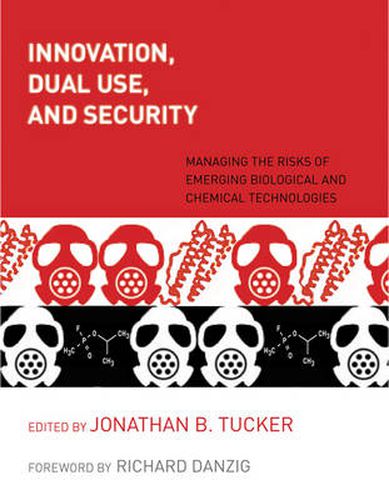Readings Newsletter
Become a Readings Member to make your shopping experience even easier.
Sign in or sign up for free!
You’re not far away from qualifying for FREE standard shipping within Australia
You’ve qualified for FREE standard shipping within Australia
The cart is loading…






Recent advances in disciplines such as biotechnology, nanotechnology, andneuropharmacology entail a dual-use dilemma because they promisebenefits for human health and welfare yet pose the risk of misuse for hostilepurposes. The emerging field of synthetic genomics, for example, can produce customDNA molecules for life-saving drugs but also makes possible the creation of deadlyviral agents for biological warfare or terrorism. The challenge for policymakers isto prevent the misuse of these new technologies without forgoing their benefits. Innovation, Dual Use, and Security offers a systematic approachfor managing the dual-use dilemma. The book presents a decisionframework for assessing the security risks of emerging technologies andfashioning governance strategies to manage those risks. This framework is applied tofourteen contemporary case studies, including synthetic genomics, DNA shuffling anddirected evolution, combinatorial chemistry, protein engineering, immunologicalmodulation, and aerosol vaccines. The book also draws useful lessons from twohistorical cases: the development of the V-series nerve agents in Britain and theuse and misuse of LSD by the U.S. Army and the CIA.
Innovation, Dual Use, and Security offers a comprehensive, multifaceted introduction to the challenges of governing dual-use technologies in anera of rapid innovation. The book will be of interest to government officials andother practitioners as well as to students and scholars in security studies, scienceand technology studies, biology, and chemistry.
$9.00 standard shipping within Australia
FREE standard shipping within Australia for orders over $100.00
Express & International shipping calculated at checkout
Stock availability can be subject to change without notice. We recommend calling the shop or contacting our online team to check availability of low stock items. Please see our Shopping Online page for more details.
Recent advances in disciplines such as biotechnology, nanotechnology, andneuropharmacology entail a dual-use dilemma because they promisebenefits for human health and welfare yet pose the risk of misuse for hostilepurposes. The emerging field of synthetic genomics, for example, can produce customDNA molecules for life-saving drugs but also makes possible the creation of deadlyviral agents for biological warfare or terrorism. The challenge for policymakers isto prevent the misuse of these new technologies without forgoing their benefits. Innovation, Dual Use, and Security offers a systematic approachfor managing the dual-use dilemma. The book presents a decisionframework for assessing the security risks of emerging technologies andfashioning governance strategies to manage those risks. This framework is applied tofourteen contemporary case studies, including synthetic genomics, DNA shuffling anddirected evolution, combinatorial chemistry, protein engineering, immunologicalmodulation, and aerosol vaccines. The book also draws useful lessons from twohistorical cases: the development of the V-series nerve agents in Britain and theuse and misuse of LSD by the U.S. Army and the CIA.
Innovation, Dual Use, and Security offers a comprehensive, multifaceted introduction to the challenges of governing dual-use technologies in anera of rapid innovation. The book will be of interest to government officials andother practitioners as well as to students and scholars in security studies, scienceand technology studies, biology, and chemistry.